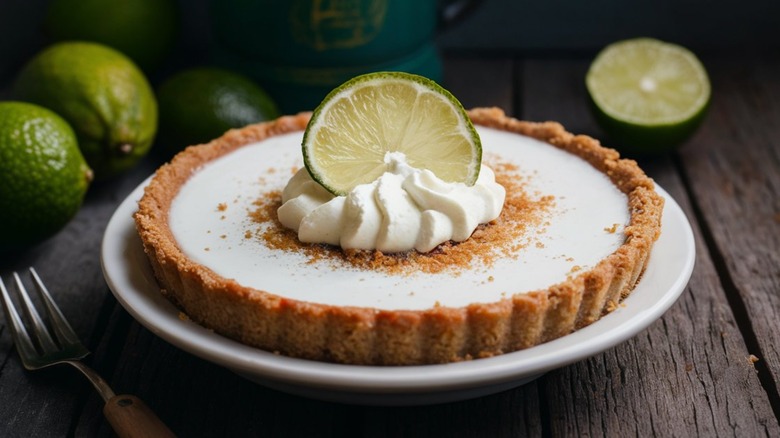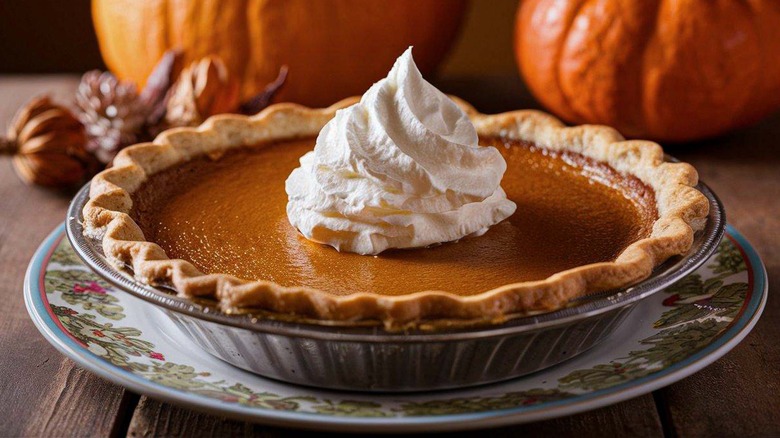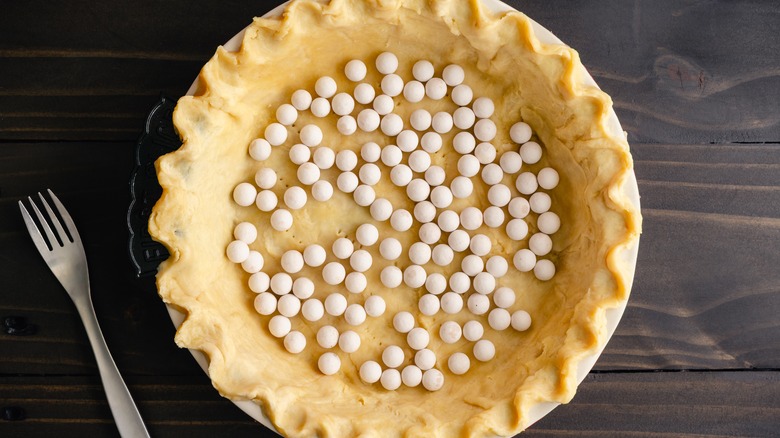What Does It Mean To Blind Bake Your Pie Crust?
If you have started poking around at baking recipes, you might have found pie or even cheesecake recipes that tell you to blind bake your crust. Unfortunately, those recipes don't always explain what blind baking is, and rarely explain why it is necessary. But fear not, it's not a difficult process and you likely already have all the equipment you need in your house in one form or another.
Blind baking your pie crust simply means that you bake the base of your pie in the oven without any filling in. You then either add a filling that doesn't need baking, or you add it in and bake the pie the rest of the way as a whole. One thing to be aware of when blind baking a crust is the risk of burning the edges, especially if you blind bake the crust and then bake it again with the filling. Keep an eye on it and wrap the edges in foil if they start to get too brown.
Why and when you need to blind bake your pie crust
If you've ever baked a pie from scratch and found that the bottom is soggy or the structural integrity isn't all it could be, then blind baking is for you. By baking the pastry that goes on the bottom of your pie before you add the filling, you ensure that it cooks through properly without it having a pile of wet pie filling on top of it, stopping the bottom from cooking before the top starts to burn. You're locking in your flaky or crispy crust before all that extra moisture is added in.
Blind baking can be used for pies where the filling doesn't actually need baking at all, like a no-bake chocolate pie. You can buy a store crust, but baking your own and adding the filling will bring the whole thing up a notch. However, there are some pies where you don't need to blind bake because the pastry will have enough time in the oven to make sure that it's fully cooked through while the filling cooks. Apple pie is a classic example of this. The apples aren't too moist until they begin to cook down, and the longer cooking time means the pastry can turn out fine. If you do find the base of your apple pie is soggy, it's easier to try switching to a metal pie tin instead of a glass one rather than trying to blind bake the crust.
Do you need pie weights to blind bake a pie crust?
Kitchen supply stores will happily sell you a box of pie weights for blind baking. If you're blind baking a crumbly base, like a cheesecake base, there's no need for any of these weights. However, if you're blind baking a pastry, weight needs to be added to prevent steam from making large bubbles in your pastry case. Pie weights are a perfect solution for this: line your pastry with parchment paper and then fill it with a layer of these metal, ceramic, or glass balls.
However, while these pie weights will do the job, they're not entirely necessary. Yes, you need to weigh the pastry down to stop the bubbles, but there are other solutions. In place of official pie weights, you can use pretty much any form of uncooked dried beans. They'll weigh the crust down in just the same way, and you can still cook and eat them later.


